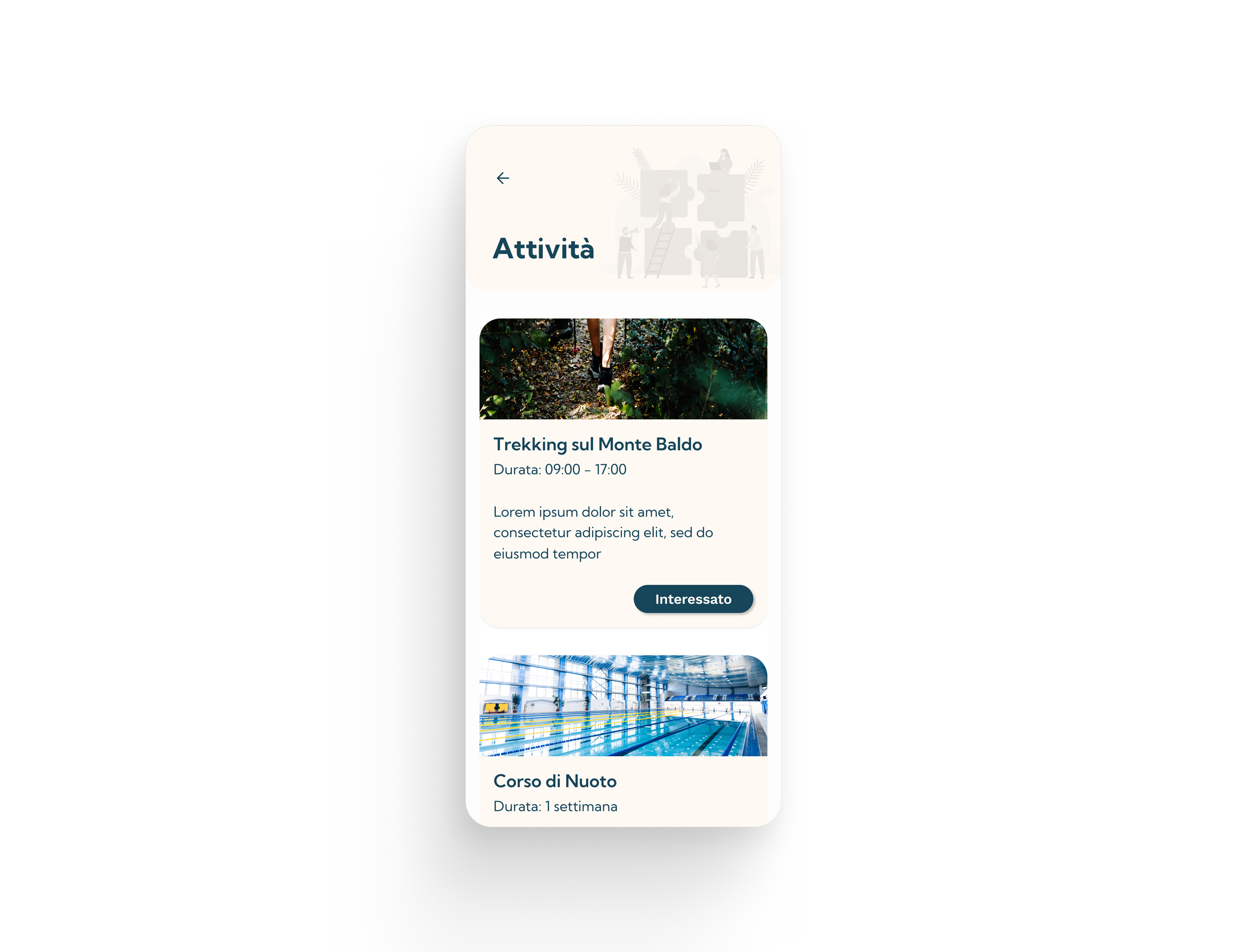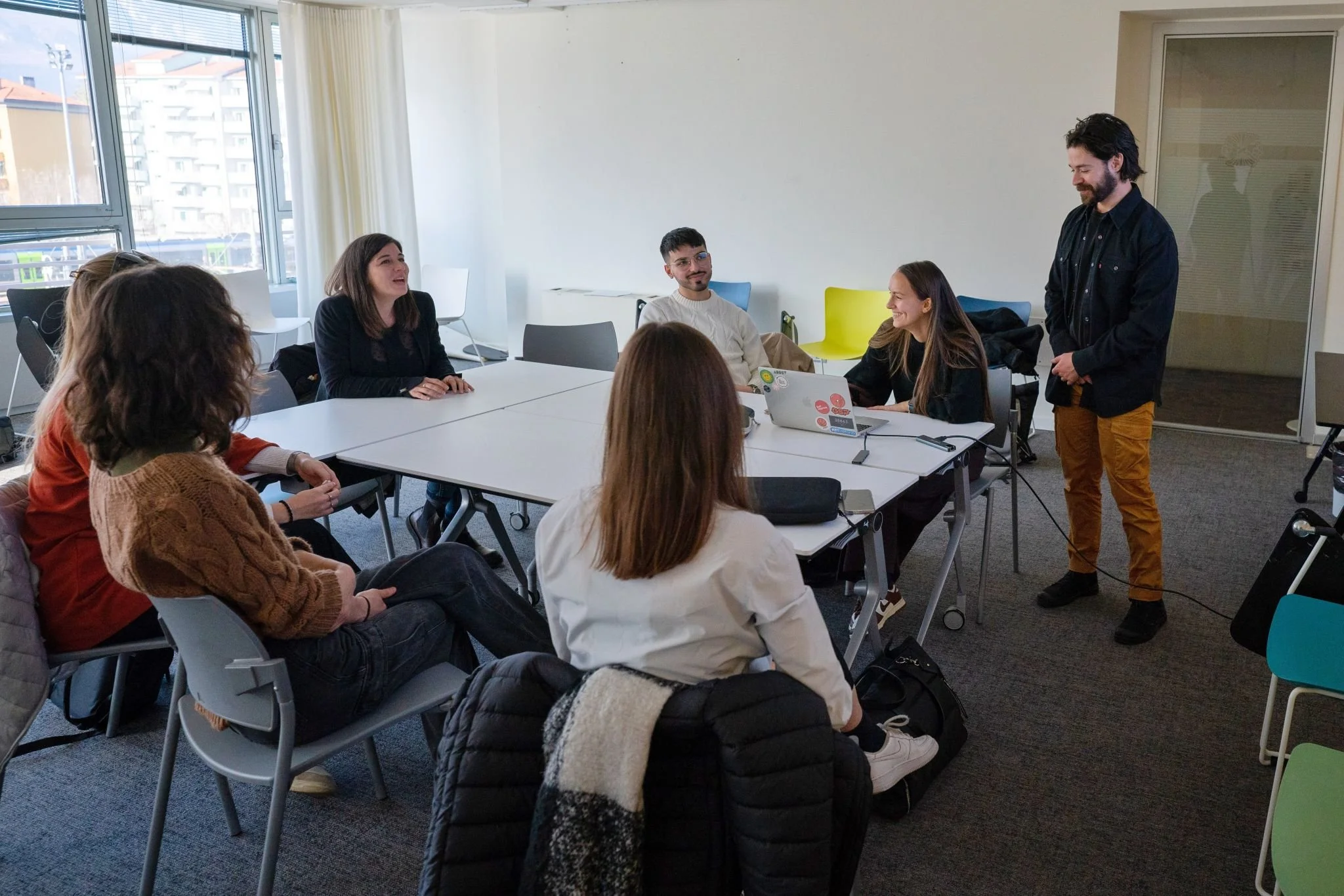Abitare - UX Challenge
How we helped 4 special roommates live together better
Timeline
Team
My Role
Methodology
User Researcher
UX Design
UI Design
Design Sprint
Result
6 members
5 days
Won the prize for greatest social impact
Context
CS4 is a social cooperative in Trentino that offers services for people with psychophysical disabilities. Among the services they offer is a flat for people with psychophysical disabilities that initially included the support of home automation systems, which have fallen into disuse due to their obsolescence.
User Problem
The tenants are unable to coordinate effectively
The housemates have different ages, different habits and struggle to coordinate in performing personal and shared tasks as well as in managing interpersonal relationships. Since they all have various types of psychophysical issues, each requires different attention and has different needs.
Business Problem
The operators’ workflow is slow and cumbersome
CS4 operators take care of all aspects concerning the tenants: physical transport, updating the schedule, handling emergencies, maintaining contact with them, ensuring they are at home, supporting their social life, and so on. Additionally, their workflow includes managing the tenants' money on their behalf and writing a daily report that must be reviewed the following day.
However, all of this is carried out across different channels: WhatsApp for communicating, Word for the report, and everything else is done on paper. As a result, their workflow is fragmented and becomes slow and cumbersome.
Requirements and Goals
A new software that helps both parties
The head of the cooperative explicitly requested a new software in the brief, and during an initial interview, we defined the goals that guided the project:
Improving the organization and management of activities related to domestic life;
Improving the organization and management of activities related to personal care;
Improving the organization and management of interpersonal relationships;
Defining the management of emergencies.
Solution
A house management app with a dual interface:
The solution was designed to speed up routine tasks and enable the tenants to be independent
Tenant’s Interfaces
Personal and Shared Calendar
Suggestions for activities to do nearby
New method for managing emergencies
Operators’ Interfaces
Possibility to modify all the calendars
Completion of the daily report fully digitalised.
Support for tenants in managing money
The Process
User Research
The operators have more needs than the tenants
I conducted 4 online interviews with 4 CS4 operators to identify system requirements and gather user input and specific needs. I did not have the chance to talk to the tenants.
Main Insights:
The current electronic agenda system is obsolete, but it was appreciated when it was working: a new simple agenda system is needed, generalizable to multiple contexts and people;
Paper documents in the apartment are inefficient and inflexible: it is essential to have an electronic agenda that is easy for tenants to consult, to make everyone’s tasks and responsibilities clear;
Daily reports are long, lengthy, and difficult to consult: a concise and standardized format is needed to leave and find essential information.
User Personas
“The good, the bad and the ugly” (just joking)
“I've been here in the apartment for years. I often have to help new arrivals to settle in and carry out tasks, but it also happens that I forget what I have to do"
“I am new in the house and would like to learn how to be independent. I need some help or a guide initially because I am afraid of making mistakes.”
“The interaction with the tenants is irreplaceable. I like to be of help to the tenants in their time of need, but there are also many bureaucratic matters that slow down the work so much “
Ideation
Why another app??
The interviews did not reveal any specific reasons why the idea of a mobile app was the only way to approach the initial problem, so the team proposed to the head of the organization the possibility of working on a tablet application or the reintegration of a smart TV. The proposal was not accepted.
User Flows
Ok, let’s build it then!
After understanding who they were designing for, we defined a user flow that formed the basis of the information architecture of the app from which we started the design phase. The features that the app needed to have were clear to us thanks to the interviews that’s the reason why we did not do a User Journey.
Sketches and Wireframes
No testing, only grinding
Given the limited time available and the inability to test anything with users (as it was not part of the challenge), we focused on designing interfaces that were as simple as possible, adhering to Norman’s heuristics. The first step was to sketch some options to evaluate within the team, and then proceed with the wireframes.
Final Design
Try it youself!
Try the interactive prototype (quick tip: press “z” to scale or open it full window).
Despite the option of a tablet/TV screen being set aside, the team still considered it a valid option. Therefore, we designed a mockup of the home screen, which was presented to the client.
Design System
Flat and colorful
A comprehensive report was delivered to the client at the end of the week, including a starting point for the Design System and the app components. The colors were chosen starting from the official logo of the social cooperative.
Result
The challenge concluded with a presentation to the client, who judged the project positively, resulting in the award for the greatest social impact!
We won!
Next Steps
Giving voice to all end users
The challenge was stimulating, however, due to time constraints, there were many things that we were not able to do and we would consider doing in the next iterations:
1-Listening to the voice of the missing: we did not have the opportunity to interview the tenants and it would be beneficial to hear their opinion as the app is partly designed for them. Only they can tell us whether they need an app or not. It might be useful to do ethnographic research to understand their habits;
2-Testing low-fi and hi-fi prototypes: as we did not have the chance to test wireframes and high-fidelity prototypes except within the team, we cannot say for sure that the tenants will positively receive the UI and UX of the app;
3-Investigate the workflow of the operators deeper: it would be useful to see the daily steps of the operators in detail to correctly define the required functionality;
Reflections
Talking to stakeholders is tough
The most important lesson I have learned during this short adventure is that even if the client is convinced of what he requires, it does not mean that it is really what he needs.












